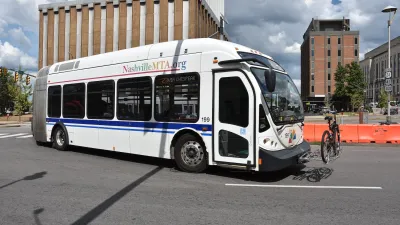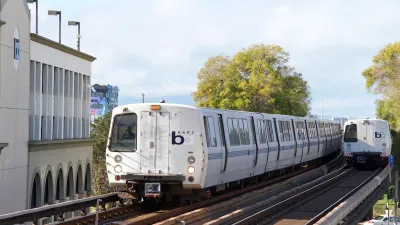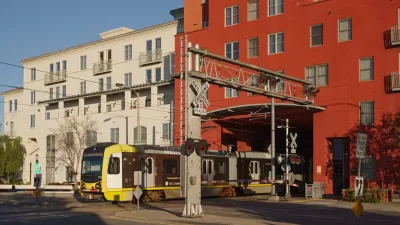Mention 'density' in suburban areas and the knee-jerk reaction is, "there go the property values". But is that really the case? In this study from San Jose State University, 4 suburban TODs are evaluated for their effects on nearby property values.
The Transit Oriented Developments (TODs) are located in the East Bay, South Bay, and Peninsula. The four reside by station stops of different categories of rail: heavy (BART), light (Valley Transportation Authority or VTA), and commuter (Caltrain) respectively. The study was funded by the Mineta Transportation Institute at San Jose State University.
From Executive Summary:
"Like any new high-density development, TODs are likely to face community opposition. This opposition may be
more vocal in suburban areas...
While the community opposition to TODs has been pronounced, very little research exists that indicates whether this opposition is well-founded. Economic theory suggests that if a TOD has a negative effect on the surrounding residential neighborhoods then that effect should lower the housing prices in these neighborhoods. Similarly an increase in the housing prices would mean a positive effect of TOD on the surrounding neighborhoods...
This study empirically estimates the impact of four San Francisco Bay Area suburban TODs on single-family home sale prices."
STUDY FINDINGS:
"This study finds that the Ohlone Chynoweth TOD (in San Jose) positively impacts the surrounding single-family residences with every 100 feet decrease in distance of a single-family home to the TOD increasing the home sale price on average by $10,150. However, the remaining three TODs do not have any effect, positive or negative, on the prices of surrounding single-family homes."
FULL STORY: Effect of Suburban Transit-Oriented Developments on Residential Property Values

Alabama: Trump Terminates Settlements for Black Communities Harmed By Raw Sewage
Trump deemed the landmark civil rights agreement “illegal DEI and environmental justice policy.”

Planetizen Federal Action Tracker
A weekly monitor of how Trump’s orders and actions are impacting planners and planning in America.

The 120 Year Old Tiny Home Villages That Sheltered San Francisco’s Earthquake Refugees
More than a century ago, San Francisco mobilized to house thousands of residents displaced by the 1906 earthquake. Could their strategy offer a model for the present?

In Both Crashes and Crime, Public Transportation is Far Safer than Driving
Contrary to popular assumptions, public transportation has far lower crash and crime rates than automobile travel. For safer communities, improve and encourage transit travel.

Report: Zoning Reforms Should Complement Nashville’s Ambitious Transit Plan
Without reform, restrictive zoning codes will limit the impact of the city’s planned transit expansion and could exclude some of the residents who depend on transit the most.

Judge Orders Release of Frozen IRA, IIJA Funding
The decision is a victory for environmental groups who charged that freezing funds for critical infrastructure and disaster response programs caused “real and irreparable harm” to communities.
Urban Design for Planners 1: Software Tools
This six-course series explores essential urban design concepts using open source software and equips planners with the tools they need to participate fully in the urban design process.
Planning for Universal Design
Learn the tools for implementing Universal Design in planning regulations.
Clanton & Associates, Inc.
Jessamine County Fiscal Court
Institute for Housing and Urban Development Studies (IHS)
City of Grandview
Harvard GSD Executive Education
Toledo-Lucas County Plan Commissions
Salt Lake City
NYU Wagner Graduate School of Public Service





























